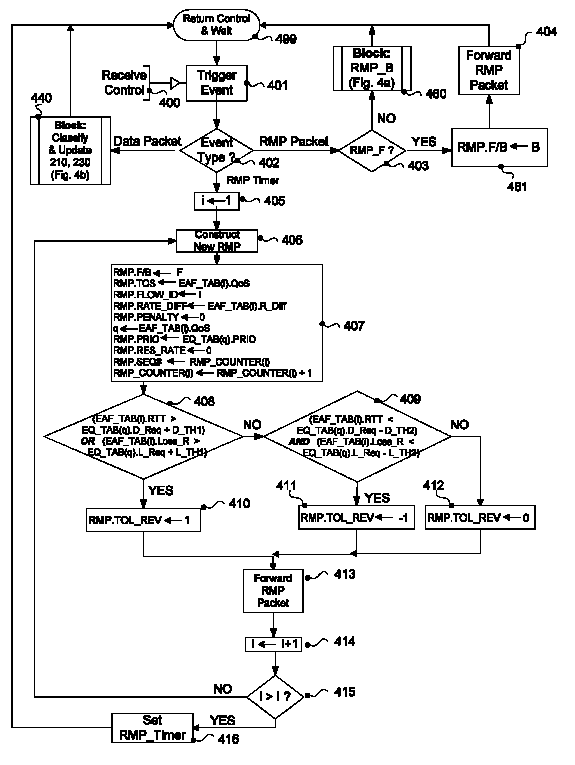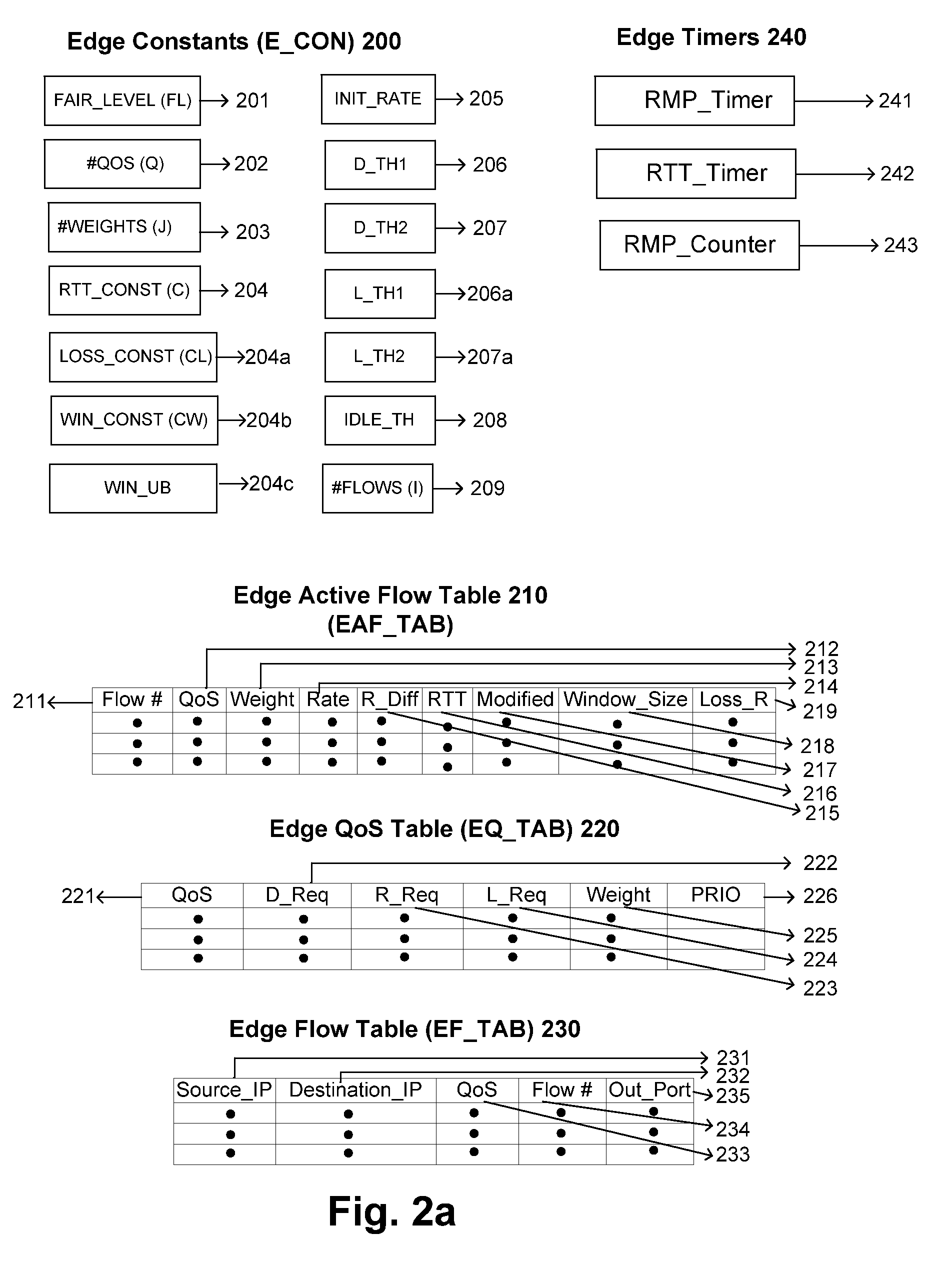Method and apparatus for fair flow control and congestion avoidance supporting multiple QoS class requirements
a flow control and congestion avoidance technology, applied in electrical equipment, digital transmission, data switching networks, etc., can solve the problems of scarifying the scalability of the solution, not being able to achieve fair bandwidth allocation between all flows, and not being able to achieve the effect of achieving scalability and avoiding congestion
- Summary
- Abstract
- Description
- Claims
- Application Information
AI Technical Summary
Problems solved by technology
Method used
Image
Examples
Embodiment Construction
[0033]A simplified block diagram of an exemplary communication network is shown in FIG. 1a. The network comprises a plurality of edge routers, e.g., 10, 20, 30, and core routers, e.g., 11, 12, 13, 14, 15, interconnected by a plurality of links. For example, link 1 connects edge router 10 and core router 12; and link 3 connects core router 11 and core router 13. Each link may represent either a single hop physical link or a logical link comprising multiple hops defined in an underlying transport network such as FR, ATM, MPLS and GMPLS. Such logical links appear to the IP network layer as a single hop link. Furthermore, different subsets of routers and links may belong to different administrative domains, e.g., ISPs, Telecom companies. Hereinafter, such general communication network comprising core routers, edge routers and connecting links is referred to in the present invention as a backbone network. User devices, e.g., 51, 52, 53, which are the end sources and end destinations of t...
PUM
 Login to View More
Login to View More Abstract
Description
Claims
Application Information
 Login to View More
Login to View More - R&D
- Intellectual Property
- Life Sciences
- Materials
- Tech Scout
- Unparalleled Data Quality
- Higher Quality Content
- 60% Fewer Hallucinations
Browse by: Latest US Patents, China's latest patents, Technical Efficacy Thesaurus, Application Domain, Technology Topic, Popular Technical Reports.
© 2025 PatSnap. All rights reserved.Legal|Privacy policy|Modern Slavery Act Transparency Statement|Sitemap|About US| Contact US: help@patsnap.com



